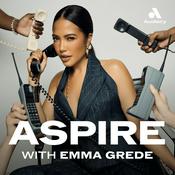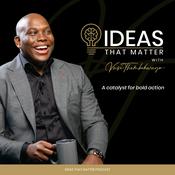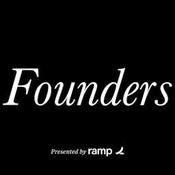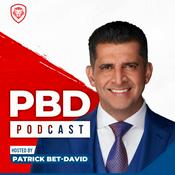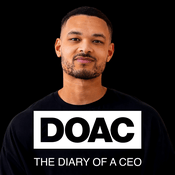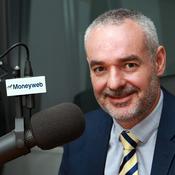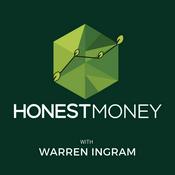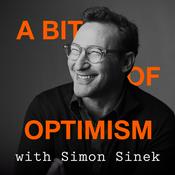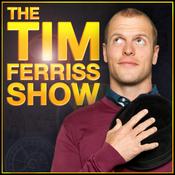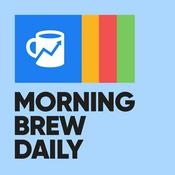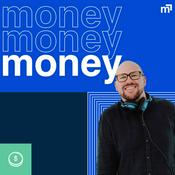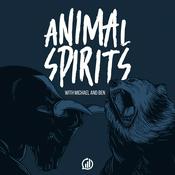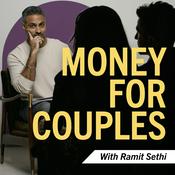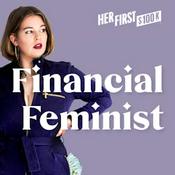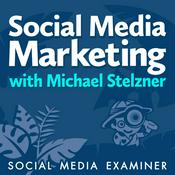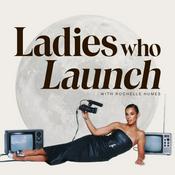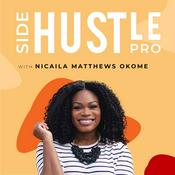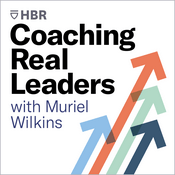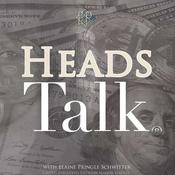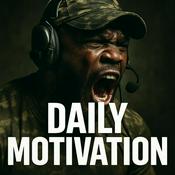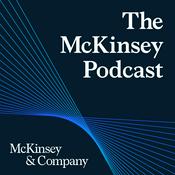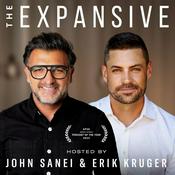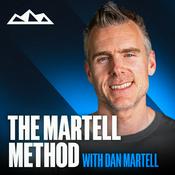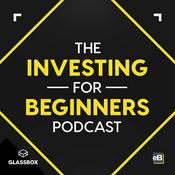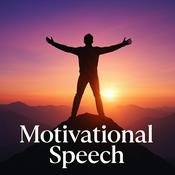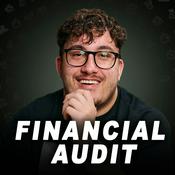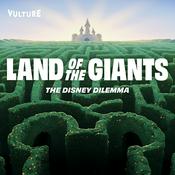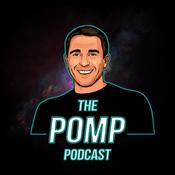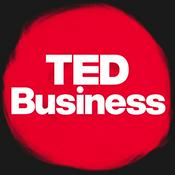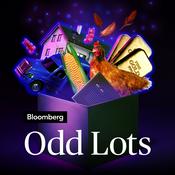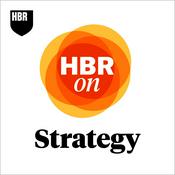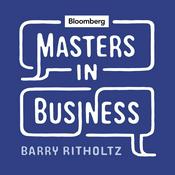285 episodes
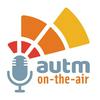
Lessons From the WIPO-AUTM Knowledge and Technology Transfer Summit with Steve Susalka
2026/1/07 | 46 mins.
In November 2025, Bangkok, Thailand became the epicenter of a global conversation about the future of innovation. Leaders from around the world gathered for the WIPO-AUTM Knowledge and Technology Transfer Summit, creating a rare space for open discussion about what is working, what is strained, and what needs to evolve in the tech transfer profession.With participants representing 27 countries, the summit surfaced a striking reality. Whether operating within long-established innovation ecosystems or building tech transfer capacity from the ground up, institutions are wrestling with many of the same core issues. Conversations repeatedly returned to questions of impact, sustainability, and talent, as well as a growing disconnect between how innovation actually unfolds and how it is often funded or evaluated. Short timelines and rigid expectations simply do not match the slow, uneven, and sometimes unpredictable path from research to real-world application.At the same time, it was clear that there is no single right model. Every region approaches technology transfer through the lens of its own culture, institutions, and policy environment. Some emphasize startups, others focus on licensing or industry partnerships, and ownership structures vary widely. What connects these approaches is a shared understanding that technology transfer is no longer a straight line from disclosure to deal. It has become an ecosystem role that requires flexibility, patience, and long-term thinking.To help unpack what these global conversations mean for the future of the profession, we’re joined by Steve Susalka, CEO of AUTM, who chaired the summit and had a front-row seat to these discussions. Drawing on perspectives from across continents and systems, Steve offers a grounded view of where technology transfer stands today, where it’s headed, and what it will take to strengthen the profession, support the people doing the work, and expand its real-world impact.In This Episode:[05:32] Steve Susalka shares why the WIPO-AUTM Summit prioritized global dialogue over prescribing best practices.[07:12] Similar concerns surface regardless of whether countries have mature or emerging tech transfer systems.[09:01] Common challenges emerge across 27 countries, even among vastly different innovation ecosystems.[11:04] Why misunderstanding the role of tech transfer creates unrealistic expectations at the institutional level.[13:18] Short-term funding cycles collide with the long timelines required for meaningful innovation.[15:02] The tension between public mission and commercial pressure facing many university offices.[17:44] A comparison of global ownership models and how they influence faculty, startups, and industry engagement.[19:26] How early industry engagement can reduce friction later in the commercialization process.[22:09] Startup formation as a critical bridge across the “valley of death” for early-stage technologies.[24:41] Why some of the most impactful technologies require patience, risk tolerance, and exclusive pathways.[27:36] The profession’s shift away from linear tech transfer models toward ecosystem-based approaches.[29:58] The growing importance of culture-building and education alongside traditional licensing work.[32:15] Why attempting to replicate Silicon Valley or MIT often fails without comparable infrastructure and culture.[34:22] Tech transfer professionals as translators between academia, industry, and government.[36:58] The human toll of tech transfer work, including burnout, turnover, and career sustainability concerns.[39:11] What sustainability really means for tech transfer offices beyond annual budgets.[41:27] How promotion and tenure systems can either reinforce or undermine innovation efforts on campus.[44:08] Why global collaboration can help regions avoid repeating the same hard-earned lessons.[46:03] What surprised Steve most in conversations with leaders from emerging innovation ecosystems.[48:37] Why measuring success purely through revenue misses the broader value of innovation activity.[50:41] AUTM’s role in advocating for the profession and making its impact more visible.[55:12] Aligning funding expectations with realistic innovation timelines as a path to greater impact.[59:08] Steve’s closing call to action for institutions, policymakers, and tech transfer professionals worldwide.Resources: AUTMFostering Global Innovation: AUTM's Role in Shaping International Tech Transfer ConversationsWIPOStephen Susalka - LinkedIn

Building Resilience in Tech Transfer with Dr. Daniel Boamah and Dr. Kimberly Green
2025/12/17 | 1h 14 mins.
This is the second episode in our special series on mental health and Tech Transfer.If you missed our first conversation with Jane Wainwright, I encourage you to go back and listen. It’s a candid look at why this topic matters and why it deserves real attention, not to be pushed to the side. Today, we’re continuing that discussion because the pressures inside tech transfer offices haven’t let up with constant policy shifts, funding uncertainty, tight deadlines, and the feeling of being stretched thinner every month. We’re joined today by two researchers from Western Kentucky University who understand these challenges from both the academic and human sides. Dr. Daniel Boamah is an assistant professor in the Department of Social Work and a licensed clinical social worker. His research focuses on intellectual and developmental disabilities, child welfare, and addressing disparities affecting African-American males, immigrants, and refugees. He also serves as the clinical director at KYSTEP’s Multigroups and Survivors of Torture Recovery Center, where he works directly with individuals navigating trauma and long-term healing.Dr. Kimberly Green is the department chair and an associate professor in Communication Sciences and Disorders at WKU. She’s a nationally certified speech-language pathologist with deep experience in cultural competence, interprofessional collaboration, and diversity and inclusion efforts. She also participated in the Association of Schools Advancing Health Professions’ 2023 Leadership Development Program, which prepares future leaders in health professions education.Daniel and Kimberly have also partnered on an innovative project using virtual reality to increase awareness of implicit bias in child welfare decision-making, with work supported by multiple grants and recognition across Kentucky’s innovation ecosystem. They’ve been through the Tech Transfer process themselves, and they understand the emotional weight that comes with high-stakes, resource-limited environments. Today, we talk openly about where stress shows up in TTOs, how external pressures are affecting well-being, and what realistic, evidence-based support can look like for professionals who feel like they’re holding everything together without enough backup.In This Episode:[03:18] How culture inside small, specialized TTO teams can either support or hinder mental well-being.[04:28] Daniel outlines how close-knit work environments amplify stress and compound personal and professional pressure.[05:36] Kimberly describes the perfect storm created by rushed timelines, shrinking budgets, and pressure to deliver measurable results.[06:31] We discuss the physical effects of burnout, including sleep disruption and declining overall health.[07:55] Insights from their own commercialization journey, highlighting the emotional demands placed on TTO staff.[09:01] The conversation turns to federal funding uncertainty and how proposed indirect cost caps are impacting morale and stability.[10:22] The psychological ripple effect of budget cuts, including quiet quitting and fractured loyalty.[11:48] We explore how external stressors, such as community trauma and world events, further intensify workplace pressure.[13:06] Job insecurity and how fear, anxiety, and grief spread through close professional communities.[14:13] The real impact of secondary trauma and emotional contagion within teams and families.[15:42] Daniel shares evidence-based strategies for boundaries, coping skills, and building support networks.[17:24] Kimberly highlights no-cost interventions such as affinity groups, behavior monitoring, and trust-centered communication.[18:44] Concerns about EAP usage and strategies to reduce stigma through leadership transparency.[20:02] Sustainable output requires building wellness into workflow rather than expecting staff to “power through.”[21:08] The importance of peer support and external networking for small TTO teams.[22:36] Leadership’s role is examined, including the need for proactive communication and meaningful involvement in problem-solving.[23:54] Why authentic recognition and listening are central to preventing burnout and turnover.[25:13] How harmful responses like “suck it up” undermine trust and accelerate burnout.[26:51] Reframing resilience and grit, noting they cannot be achieved without recovery time and realistic expectations.[28:18] Individual resilience from trauma-informed organizational change and why both matter.[29:34] Practical steps for individuals to unplug, seek help, and be present during the holiday season.[31:21] Workplace trauma is unpacked, revealing how fear, grief, and emotional contagion move through small, overstressed teams.[34:40] Practical mental health strategies are offered, including monitoring physical cues, limiting constant availability, and normalizing unplugging.[38:42] Kimberly emphasizes that meaningful improvements often come from trust, communication, and simple organizational shifts — not expensive programs.[41:11] Stigma surrounding employee assistance programs is addressed, along with ways leaders can model openness to help others feel safe using resources.[44:07] Taking time off becomes complicated when returning means facing a higher workload, reinforcing the need to rethink recovery time.[47:00] Peer support expands outside the home institution, providing a new perspective and a healthier emotional balance for isolated teams.[50:44] Red tape frustrations appear as a major pressure point, prompting a call for proactive collaboration rather than reactive crisis management.[53:15] Leaders are encouraged to ask staff directly what they need instead of guessing from a distance.[57:58] Resilience loses meaning when constant pressure leads to exhaustion rather than growth, and rest must be part of the equation.[1:01:43] How system-level responsibility must match expectations placed on individuals to support mental well-being truly.[1:05:24] Practical holiday-season reminders include being present, seeking help, and allowing yourself to unplug without guilt.[1:08:46] The power of leadership modeling, transparency, and ongoing communication in rebuilding trust.Resources: Daniel Boamah, Ph.D., LCSW - Western Kentucky UniversityDaniel Boamah, Ph.D., MA, LCSW - LinkedInKimberly J. Green, Ed.D., CCC-SLP - Western Kentucky UniversityKimberly J. Green - LinkedInDevelopment of a Multitenant Virtual Reality Platform for Increasing Awareness of Implicit Bias in Child Welfare Decision-Making A Public Health CrisisImproving Mental Health Across IP and Tech Transfer with Jane WainwrightBreaking the Silence on Mental Health in Technology Transfer with Megan Aanstoos, Anji Miller, and Ed Ergenzinger

The Origin of Technology Transfer Professionals Day with Chad Riggs
2025/12/10 | 36 mins.
Every now and then, someone inside a Tech Transfer office tries something small, something meant for their own team, and it ends up resonating far beyond their campus. That’s the path our guest followed, and it’s a great reminder of how ideas in this profession can ripple outward in ways we don’t always expect.My guest today is Chadwig “Chad” Riggs, former marketing associate at St. Jude Children’s Research Hospital’s Office of Technology Licensing and the creator of Technology Transfer Professionals Day, which is celebrated each year on December 12, the anniversary of the Bayh–Dole Act. Chad talks about how this whole effort began with a quick holiday video meant to help colleagues understand the licensing process, and how it slowly turned into a day of recognition, education, and connection. He also shares small touches, like custom inventor mugs or light-bulb candy favors, that helped bring faculty into the conversation and made tech transfer feel more approachable.From there, the idea eventually made its way to AUTM, and Chad explains what it took to turn an internal activity into a national recognition day. Along the way, we touch on why acknowledgement matters, especially now, and how stories like St. Jude’s ALK gene journey show the real-world impact that can come from sustained licensing and partnership work. It’s an encouraging reminder that shining a light on the people behind commercialization can strengthen the whole ecosystem.In This Episode: [00:33] We discuss Chad Riggs’ background at St. Jude’s Office of Technology Licensing.[01:20] How marketing, outreach, and internal engagement became central to his Tech Transfer role.[02:45] He recalls how a simple holiday video sparked the idea for broader year-round education and recognition.[04:13] Chad describes the early holiday videos at St. Jude and why Tech Transfer needed its own presence.[05:40] We learn how he wanted to build excitement around disclosures and increase faculty participation.[07:05] The team brainstorms their first set of activities for Technology Transfer Professionals Day.[08:10] Chad talks about St. Jude’s culture of celebrating different professional groups across the hospital.[09:30] The realization hits: Tech Transfer deserves its own day, too.[10:15] He outlines the initial reaction from colleagues and leaders when he proposed the idea.[11:00] Chad explains why choosing December 12, the anniversary of Bayh–Dole, was non-negotiable.[11:43] The team launches their first celebration with inventor mugs, quizzes, and creative giveaways.[13:10] He discusses the importance of pairing recognition with education about the disclosure and licensing process.[14:30] Chad shares how elevator screens, newsletters, and repeated messaging helped build internal awareness.[15:45] He breaks down why the Bayh–Dole Act remains central to Tech Transfer’s identity and purpose.[17:25] The story shifts to how Chad brought the idea to AUTM and pushed for national adoption.[18:50] He talks about navigating committees, lobbying concerns, and sticking to the holiday’s true intent.[20:15] Chad reflects on watching institutions nationwide make the celebration their own.[21:40] Creative examples, like office competitions, stickers, and venture program spotlights, start appearing.[23:00] The AUTM toolkit expands the day with graphics, hashtags, and award ideas.[24:10] Chad shares how recognition days help fight burnout and remind researchers that TTOs are real people.[25:35] He emphasizes the importance of visibility and human connection in a “black box” profession.[26:50] The conversation turns to morale, retention, and why small acknowledgments matter.[27:55] Chad explains how giving people ownership of ideas increases engagement and buy-in.[29:15] He talks about the value of creative exercises and “batting practice” for building stronger innovation habits.[30:40] Chad shares the ALK gene story as a powerful example of the long-term impact of Tech Transfer.[32:20] The discussion covers how one discovery evolved into multiple FDA-approved therapies.[34:05] He highlights the economic and clinical reach of ALK inhibitors around the world.[35:10] Chad reflects on decades of work that eventually returned to benefit pediatric patients.[36:00] Tech Transfer is the bridge that takes research from the benchtop to the bedside.Resources: Celebrate the Contributions of Tech Transfer ProfessionalsBetter World ProjectBayh–Dole CoalitionSt. Jude Children’s Research HospitalChad Riggs - St. Jude Children’s Research HospitalChad Riggs - LinkedIn

Rethinking the Future of University Funding with Dr. Yasheng Huang
2025/12/03 | 1h 3 mins.
There’s a fundamental shift happening in the world of American research universities, and people across higher education are feeling it. Funding that once seemed dependable is now uncertain, and the pressure coming from political and economic changes is hard to overlook. More and more, leaders and researchers are asking tough questions about how the current system can keep up, and what needs to evolve to protect the future of discovery and innovation.Today’s guest, Dr. Yasheng Huang, brings a thoughtful and deeply informed perspective to that conversation. He is the Epic Foundation Professor of Global Economics and Management at the MIT Sloan School of Management, and one of the world’s leading voices on global innovation systems, technology policy, and the Chinese economy. He has written 13 books, including Capitalism with Chinese Characteristics, named Best Book of 2008 by The Economist, and The Rise and Fall of the East, selected by Foreign Affairs as its Best Book of 2023. His recent article in Nature, Universities Must Harness Their Financial Value, has sparked an important debate across higher education.In this episode, Dr. Huang talks about why the traditional funding compact between universities and the federal government is breaking down, why universities create extraordinary economic value that they rarely capture, and what bold new approaches might protect the future of research. He also shares a candid warning about the risk of losing scientific talent, and why innovation within university finance may be essential to preserving the innovation ecosystem itself.In This Episode:[02:15] Dr. Huang explains why he opened his Nature article with a comparison between university endowments and Elon Musk’s wealth.[04:02] Discussion on the imbalance between perceived university wealth and actual financial resources needed for research.[06:51] Historical accumulation of endowments vs. rapid individual wealth creation highlights the funding disparity.[08:29] The economic impact of university-driven innovation and the paradox of unrecognized value.[09:51] Examples of Stanford and MIT entrepreneurship driving massive global GDP value that universities cannot record financially.[12:52] Dr. Huang reflects on the communication gap between universities and the general public about research impact.[16:39] Explanation of the historic “social compact” between universities and the federal government after World War II.[18:00] How legislative changes enabled university-owned IP and helped spark modern entrepreneurship.[20:00] The consequences of current funding suspensions, budget cuts, and a proposed tax on endowment income.[21:40] Rising costs of scientific research and the increasing scale of talent and equipment needed to sustain discovery.[24:53] Funding imbalances across disciplines, with material science and energy research falling behind.[27:59] Licensing revenue limitations and why patent income cannot sustain university budgets alone.[34:49] The Weizmann Institute model and lessons from more aggressive IP commercialization strategies.[37:51] The tension between commercialization and academic values, and the need for responsible guardrails.[39:14] Proposal to explore taxing a small portion of faculty outside consulting income to support shared research infrastructure.[46:55] Discussion of equity across disciplines and why financial benefits rarely flow to the broader academic community.[52:06] The risk of losing scientific talent to other countries and historical examples of long-term consequences.[59:55] A hopeful note about recent elections and restoring confidence in the stability of democratic institutions.[1:00:28] Reflections on academic freedom and the need for bold innovation in university funding models.Resources: Yasheng Huang - MIT Management Sloan SchoolYasheng Huang - MIT Center for International StudiesUniversities Under Fire Must Harness More Of The Financial Value They CreateCapitalism with Chinese Characteristics: Entrepreneurship and the StateThe Rise and Fall of the East

Improving Mental Health Across IP and Tech Transfer with Jane Wainwright
2025/11/19 | 46 mins.
Mental health is increasingly a focus in Tech Transfer as people try to keep pace with heavy workloads, fast-moving deadlines, and the pressure to make the right call with limited time and information. To bring more attention to what professionals are experiencing, we’re opening a new series on wellbeing and resilience with a conversation featuring today’s guest, Jane Wainwright. This series will look at the challenges many carry quietly and highlight approaches that support healthier, more sustainable workplaces across research commercialization.Jane has spent more than twenty years at Potter Clarkson and led the firm’s biotechnology practice. Over the course of her career, she managed global life sciences portfolios, supported clients through demanding legal and scientific issues, and served in senior leadership roles. Alongside that work, she trained as a mental health first aider, earned advanced coaching credentials, founded Starry-Eyed Pragmatics, and joined the advisory board of Jonathan’s Voice, a charity dedicated to mental health within the IP profession.We discuss the pressures she has seen across both patent practice and tech transfer, from perfectionism and tight timelines to the “always on” habits that leave many people exhausted. She shares what she’s seen help in real workplaces, including more substantial support from leadership and better ways to share responsibility for urgent matters. Jane also reflects on how small culture shifts can make it easier for people to do their work without feeling overwhelmed. It’s a practical, honest way to start this new series and a conversation many listeners will recognize from their own environments.In This Episode:[01:03] Jane’s background in high-pressure patent work sets the stage for discussing mental health challenges.[01:32] The conversation outlines the real consequences of missed deadlines and the constant pressure to get things right.[02:26] Jane’s shift toward mental health advocacy and her work with Jonathan’s Voice comes into focus.[03:04] She describes the mental health landscape in IP and why perfectionism and long hours contribute to hidden struggles.[04:03] Jane shares her personal experience with depression and anxiety and explains how it shaped her advocacy.[07:57] We discuss how global uncertainty, rapid change, and AI concerns add new layers of stress.[09:19] Data from a wellbeing survey highlights how deadlines, workloads, and client demands affect IP professionals.[12:42] Differences in workload stress across regions and firm sizes come up as contributors to burnout.[14:54] Why perfectionism makes it hard for teams to accept "good enough" under tight timelines.[17:21] We address why many feel unable to take time off and how workload pressure affects vacation habits.[18:22] Jane talks about surface-level wellness initiatives versus meaningful organizational change.[19:34] She emphasizes the importance of team structures that share responsibility and reduce overload.[21:01] The role of teamwork and continuity planning in reducing stress becomes a central theme.[22:07] Strategies for very small TTOs and solo practitioners are explored, including outsourcing and prioritization.[23:18] The importance of having a support network and access to confidential help is discussed.[24:57] Jane reflects on her transition from partner to full-time wellbeing and coaching work.[29:03] We examine how senior leaders view mental health and the need to “meet them where they are.”[30:29] Generational differences in attitudes toward mental health begin to shift firm culture.[32:35] Emotional intelligence is highlighted as a core competency for supporting healthy teams.[35:31] Leadership modeling of healthy behavior helps build psychological safety.[35:47] What actually works beyond wellness perks, including trust and clear expectations.[37:59] Jane discusses role modeling, healthy boundaries, and avoiding the “always available” culture.[40:21] Emotional intelligence as a learnable skill is explored, including how it evolves.[41:54] Signs of cultural change give Jane hope, alongside growing awareness and new generations entering the field.[44:03] Real progress takes time, especially in high-workload environments like U.S. law firms.[44:47] Why mental health and organizational performance are deeply connected.Resources: Starry-Eyed PragmaticsJane Wainwright - LinkedInJonathan’s Voice2022 Mental Wellbeing Survey of the IP Profession
More Business podcasts
Trending Business podcasts
About AUTM on the Air
Listen to AUTM on the Air, Aspire with Emma Grede and many other podcasts from around the world with the radio.net app

Get the free radio.net app
- Stations and podcasts to bookmark
- Stream via Wi-Fi or Bluetooth
- Supports Carplay & Android Auto
- Many other app features
Get the free radio.net app
- Stations and podcasts to bookmark
- Stream via Wi-Fi or Bluetooth
- Supports Carplay & Android Auto
- Many other app features


AUTM on the Air
download the app,
start listening.
